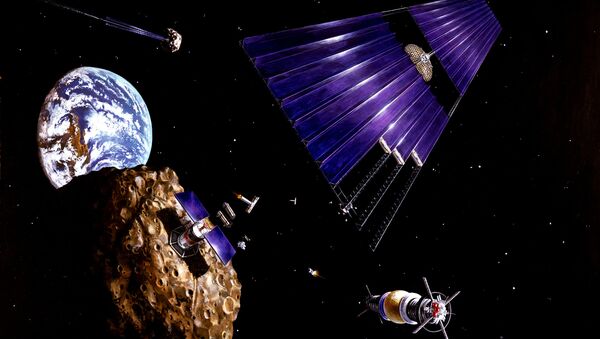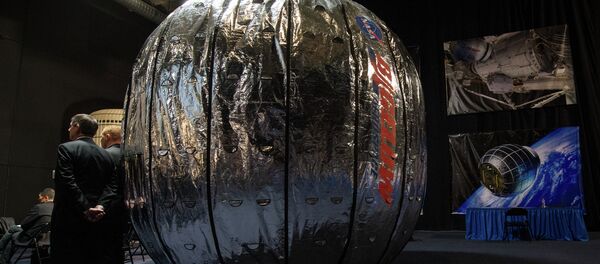He detailed the step-by-step strategy currently implemented by his company, together with Deep Space Industries: In short, in order to operate mining machinery on asteroids, humans need to first learn how to extract water from them. But who needs water if asteroid mining is destined to be remotely-operated? Robots don’t get thirsty, after all.
Water will serve as a fuel source – its hydrogen and oxygen can power mining aggregates and even supply rockets.
“We have every expectation that delivering water from asteroids and creating an in-space refueling economy is something that we'll see in the next 10 years — even in the first half of the 2020s,” Lewicki said.
Moreover, the process may eventually not even need so much as hardware sent from our planet, a team of NASA researchers suggest in an article entitled “Affordable, Rapid Bootstrapping of the Space Industry and Solar System Civilization.” They say they’ve developed a reliable computer model to estimate the potential of entirely self-sustaining asteroid mining.
“We took it through six generations of robotic development and you can achieve full closure and make everything in space," the study reads. "We showed you can get it down to launching 12 tons of hardware, which is incredibly small.”
The Asteroid Belt is estimated to house valuable deposits of rare metals like platinum and nickel, exceeding levels found on Earth billions of times, earlier research by NASA’s Kennedy Space Center revealed.
Planetary Resources is currently testing its Arkyd-3R cubesat, a spacecraft launched from the International Space Station in July for a 3-month mission. Its next craft, the Arkyd-6 cubesat, will be launched in December using SpaceX’s Falcon 9 rocket.
Welcome to space #A3R! Thank you @StationCDRKelly for the beautiful pic of our #Arkyd beginning its mission. pic.twitter.com/B1RvWk9r8y
— Planetary Resources (@PlanetaryRsrcs) July 16, 2015
The cubesat is to be followed by the Arkyd 100, twice as big as the Arkyd-6, which in turn will be succeeded by the Arkyd 200 and Arkyd 300 perspective models, according to Space.com. The timeframe for Arkyd 200 testing is 2017 or 2018 and for Arkyd 300, which will land on a targeted asteroid – late 2018 or 2019.
Commercial space companies are quite optimistic as to the perspectives of asteroid mining. They say they have the necessary level of flexibility in order to react appropriately to possible industry challenges and failures.
“If there's one thing that we've seen repeat throughout history, it's, you tend to overpredict what'll happen in the next year, but you tend to vastly underpredict what will happen in the next 10 years,” Planetary Resources’ Lewicki was quoted as saying by Space.com.
To the team at @SpaceX — Soon spaceflight will be routine, and its days like today that help get us there. Press on!
— Chris Lewicki (@interplanetary) June 28, 2015
“We're moving very fast, and the world is changing very quickly around us, so I think those things will come to us sooner than we might think.”




